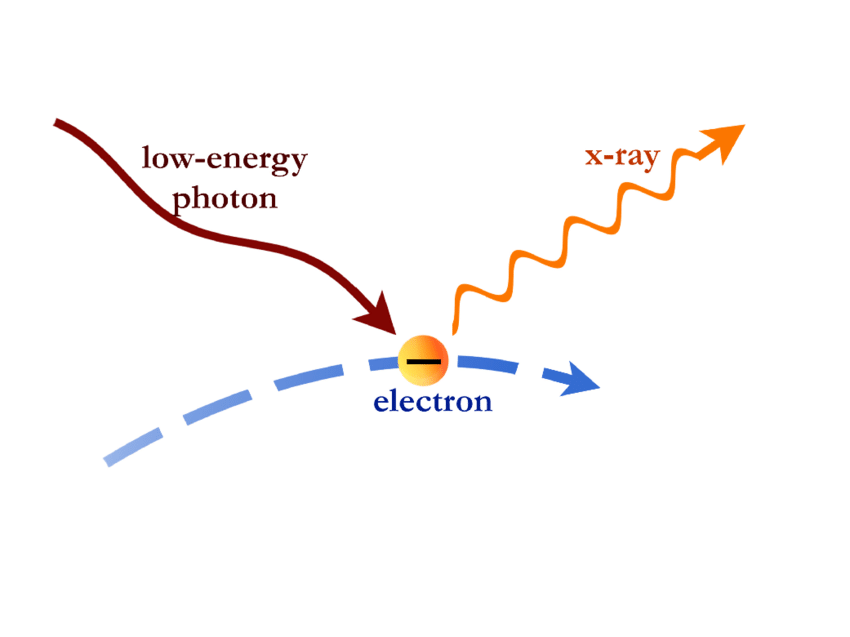This is a short blurb from my notebook.
Inverse Compton effect
The Inverse Compton effect happens when a photon interacts with a relativistic/”hot” electron. The kinetic energy is transferred from the electron to the photon, which emerges with a higher frequency (e.g. X-rays in the image). The electron cools off.
Imaging astrophysical phenomena
Photons travelling across the universe interacting with electrons produces higher-frequency radiation, enabling the observation of otherwise hidden objects.
- By increasing the energy of scattered photons, previously undetectable objects or phenomena can become observable.
- Different frequencies can reveal distinct properties of objects. For example, radio imaging provides insights into magnetic fields and free electrons.
- The effect can be used to estimate the thermal energy density of cosmic environments.
- A key application is the ability to generate ultra short electromagnetic pulses.
- In laboratory settings, electrons can be accelerated to high energies and scattered against photons, creating observable signals such as X-rays and gamma rays. This occurs when electrons are in motion and interact with photon fields.
Cosmic Microwave Background (CMB):
The Inverse Compton effect often occurs between cosmic ray electrons and CMB photons. As electrons interact with CMB photons, they lose energy and slow down. This explains why most cosmic ray electrons detected on Earth originate from within our galaxy. Meanwhile, the photons gain energy, leading to slight changes in CMB temperature. This phenomenon is linked to redshifting, allowing scientists to measure the average temperature of gas at various redshifts throughout the universe’s history. For instance, observations show that the gas was cooler around half the age of the universe.
Crab Nebula: The Inverse Compton effect is observed around the Crab Nebula, where it contributes to X-ray emissions.
Radio Lobes: Low-energy interactions produce detectable X-rays in radio lobes.
Pulsar winds. The effect plays a role in the dynamics of pulsar winds
